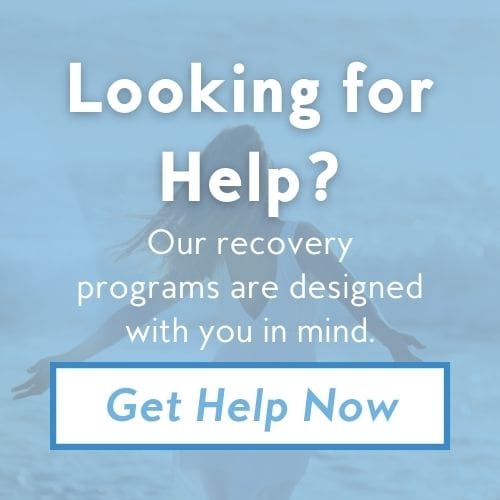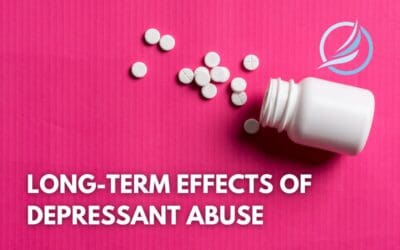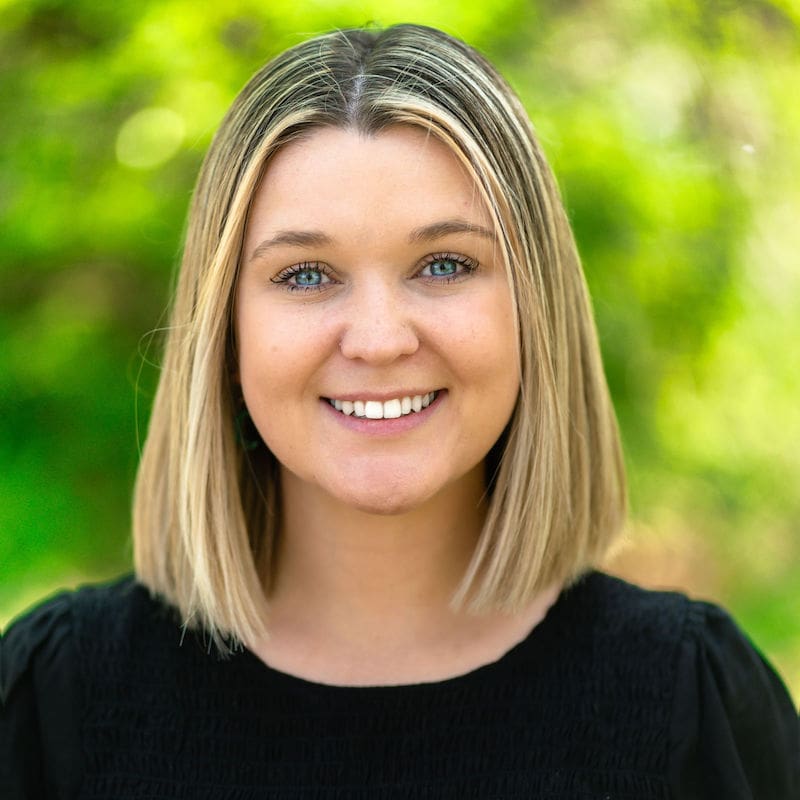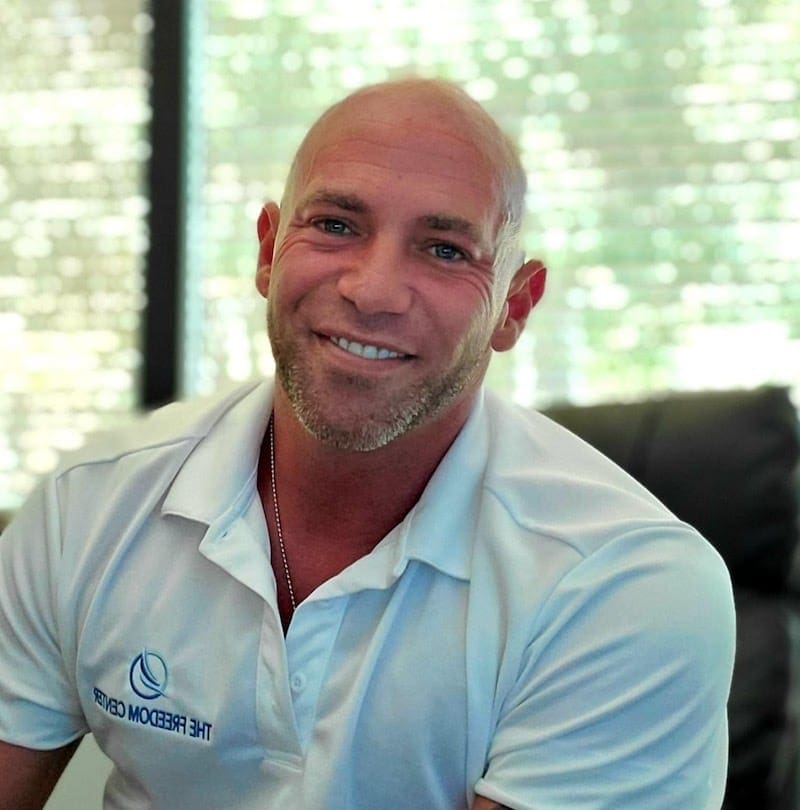Self-injury, also known as self-harm, is intentionally harming yourself, often as an unhealthy coping mechanism for intense emotional pain or distress.
Studies suggest that approximately 17% of teenagers and up to 35% of college students have reported self-harming at some point. However, it’s important to note that self-injury can occur at any age and is not limited to any specific demographic group.
Understanding the causes and warning signs of self-injury is crucial for providing support and fostering awareness about this serious issue.
What is Self-Injury?
Self-injury is a catch-all term for many behaviors where individuals intentionally harm their bodies. Though self-injury is not considered a mental illness on its own, people with mental illnesses like depression and anxiety are more likely to self-harm.
Self-injury is often an unhealthy coping mechanism that individuals use to deal with emotional pain, feelings of numbness, or a sense of losing control.
Even worse, the cycle of self-injury can be addictive and challenging to break. Some individuals report a temporary sense of relief or release after self-harming, which can reinforce the behavior. However, this relief is often followed by feelings of shame, guilt, or regret, leading to further emotional distress and potentially more self-harm.
The most common forms of self-injury include:
- Cutting: Using sharp objects to cut the skin, often on arms, legs, or torso.
- Burning: Deliberately burning the skin with cigarettes, lighters, or other hot objects.
- Scratching: Excessively scratching the skin to the point of drawing blood or causing scarring.
- Hitting or Punching: Striking themselves or hard objects to cause bruising or other injuries.
- Hair Pulling (Trichotillomania): Compulsively pulling hair from the scalp, eyebrows, or other body parts.
- Interfering with Wound Healing: Picking at scabs or reopening wounds to prevent healing.
- Fractures: In more severe cases, intentionally breaking bones or causing serious injuries.
It’s essential to understand that self-injury is different from suicidal behavior. Still, while those who self-injure don’t usually intend to end their lives, they are at a higher risk for suicide attempts if left untreated.
Common Causes of Self-Injury
Understanding the common causes of self-injury is crucial for providing appropriate support and intervention. Here are some of the primary causes.
Psychological Factors
- Mental Health Disorders: Mental health conditions often play a role in self-injury. Conditions such as depression, anxiety disorders, borderline personality disorder, and post-traumatic stress disorder (PTSD) are usually associated with self-injury.
- Trauma and Abuse: A history of physical, emotional, or sexual abuse can lead to self-injury as a way to cope with the trauma. Those who have experienced physical, sexual, or emotional abuse may turn to self-injury as a way to cope with the lasting effects of their trauma.
- Low Self-Esteem: Individuals with low self-worth or self-esteem may harm themselves as a form of self-punishment or expression of self-hatred.
Neurobiological Factors
- Brain Chemistry: Research suggests that neurotransmitter imbalances, such as serotonin and dopamine, may contribute to self-harming behaviors. Serotonin plays a crucial role in mood regulation, and disruptions in its function have been associated with increased impulsivity and aggression.
- Endorphin Release: Self-injury can trigger the release of endorphins, the body’s natural painkillers, which can create a temporary sense of euphoria or relief.
Social and Environmental Influences
- Family Dynamics: Dysfunctional family relationships, lack of support, or witnessing family members self-harm can influence an individual’s behavior.
- Peer Pressure: Bullying, social isolation, or pressure from peers can contribute to feelings of hopelessness and lead to self-harm.
- Media Influence: Exposure to self-harm behaviors through media, internet communities, or social networks can normalize the behavior and encourage imitation.
- Control: Self-harm can be a way to exert control over one’s body in an environment where the individual feels powerless or out of control.
Warning Signs of Self-Injury
While individuals who self-harm often go to great lengths to hide their behavior, several physical, behavioral, and emotional signs may indicate someone is self-harming:
Physical Signs:
- Unexplained cuts, bruises, burns, or scars, often in patterns or on easily accessible areas such as arms, legs, or stomach.
- Frequent “accidental” injuries or implausible explanations for wounds.
- I wore long sleeves or pants even in hot weather to cover up injuries.
- Keeping sharp objects or other tools that could be used for self-harm readily available.
- Patches of missing hair or bald spots from hair pulling.
Behavioral Signs:
- Spending unusually long periods alone in the bathroom or other private areas.
- Isolating themselves from friends and family or showing sudden changes in social habits.
- Difficulties in interpersonal relationships.
- A sudden drop in performance at school or work.
- Expressing a desire to wear concealing clothing even when it’s not typical.
- Being secretive about certain areas of their body or possessions.
Emotional Signs:
- Expressing feelings of worthlessness, hopelessness, or intense emotional pain.
- Difficulty managing emotions or having unpredictable mood swings.
- Being irritable or easy to anger.
- Expressing a lack of sense of identity or feeling “empty.”
- Displaying signs of depression, anxiety, or other mental health concerns.
- Impulsivity or engaging in other risky behaviors beyond (potentially) self-harming.
It’s important to note that the presence of one or more of these signs doesn’t necessarily mean an individual is self-harming. However, noticing a combination of these warning signs, especially if they persist over time, may warrant further attention or professional help.
How to Approach Someone Who May Be Self-Injuring
If you suspect someone you know self-harms, approaching the situation with care, sensitivity, and respect is crucial. Here are some guidelines for initiating a conversation and offering support:
- Express Your Concern: Start the conversation by expressing your worry non-judgmentally. Use “I” statements, such as “I’ve noticed you seem to be struggling lately, and I’m concerned about you.”
- Be Direct but Gentle: While being clear about your concerns is important, avoid being accusatory. Ask open-ended questions that allow the person to share at their own pace.
- Listen Actively: Give the person your full attention and listen without interrupting. Show that you’re engaged through your body language and occasional verbal affirmations.
- Avoid Judgment or Criticism: Self-injury often comes with feelings of shame and guilt. Refrain from expressing shock, disgust, or disappointment, which may discourage the person from opening up.
- Offer Support and Resources: Let them know you’re there to support them and help them find professional help if they’re ready. Offer to help seek therapists or support groups.
- Respect Their Privacy: While it’s important to encourage them to seek help, respect their right to privacy. Don’t share their situation with others without their permission unless you believe they’re in immediate danger.
- Be Patient: Recovery from self-injury is often a long process. Be prepared to offer ongoing support and understanding.
Remember, your role is to be supportive and encouraging, not to act as a therapist or to “fix” the problem. This is especially true considering that professional help is often necessary for effectively addressing self-injury.
Treatment and Support Options
Professional help is essential for those who self-injure. A comprehensive treatment plan often involves a combination of therapy, medication (sometimes), and ongoing support. Here are some of the primary treatment options available for people who self-harm.
Psychotherapy
- Cognitive Behavioral Therapy (CBT): Helps individuals identify and change negative thought patterns and behaviors. CBT can be particularly effective in developing healthier coping mechanisms and addressing underlying issues contributing to self-harm.
- Dialectical Behavior Therapy (DBT): Originally developed for treating borderline personality disorder, DBT is highly effective for self-injury. It focuses on mindfulness, emotion regulation, distress tolerance, and interpersonal effectiveness, some of the most common pain points of people who self-harm.
- Psychodynamic Therapy: This approach explores how past experiences and unconscious thoughts may contribute to current behaviors, including self-harm.
- Family Therapy: Involving family members in treatment can be beneficial, especially for younger people. Family therapy can improve communication, address family dynamics that may contribute to self-harm, and help create a supportive home environment.
Medication
While there’s no specific medication for self-injury, some psychiatric medications may be helpful for mental health conditions such as depression, anxiety, or bipolar disorder, which often co-occur in people with self-harm. These may include:
- Antidepressants
- Anti-anxiety medications
- Mood stabilizers
Support Groups
Peer support groups can provide a sense of community and understanding for individuals recovering from self-injury. These groups offer a safe space to share experiences, coping strategies, and encouragement.
Inpatient or Residential Treatment
For severe cases of self-injury or when there’s a high risk of suicide, inpatient treatment may be necessary. These programs provide intensive, round-the-clock care and support that helps people who self-harm avoid common triggers for their impulses, providing a stepping stone to understanding their actions and how to manage them.
Holistic Approaches
Complementary therapies such as mindfulness meditation, art therapy, or yoga can be helpful additions to traditional treatment methods, offering alternative ways to manage stress and emotions.
It’s important to emphasize that holistic therapies supplement psychotherapy, support groups, etc., and can be effective for some people but are not a substitute for traditional treatment.
Crisis Helplines
Many countries offer crisis helplines that provide immediate support for individuals struggling with self-harm or suicidal thoughts. These can be crucial resources during moments of intense urges or distress.
For example, The National Association on Mental Illness’s (NAMI) HelpLine is available Monday through Friday from 10 a.m. to 10 p.m. by calling 800-950-6264.
Understanding Self-Injury Helps Provide Support for Loved Ones
It’s essential to approach the topic of self-injury with compassion, understanding, and without judgment. By fostering open conversations about mental health and providing accessible resources, we can create a more supportive environment for those battling with self-harm.
If you or someone you know is engaging in self-injury, remember that help is available. Reaching out to a mental health professional, trusted adult, or support hotline can be the first step towards recovery.
With the proper support, individuals can learn healthier coping mechanisms, address underlying issues, and move towards a life free from self-harm.


































